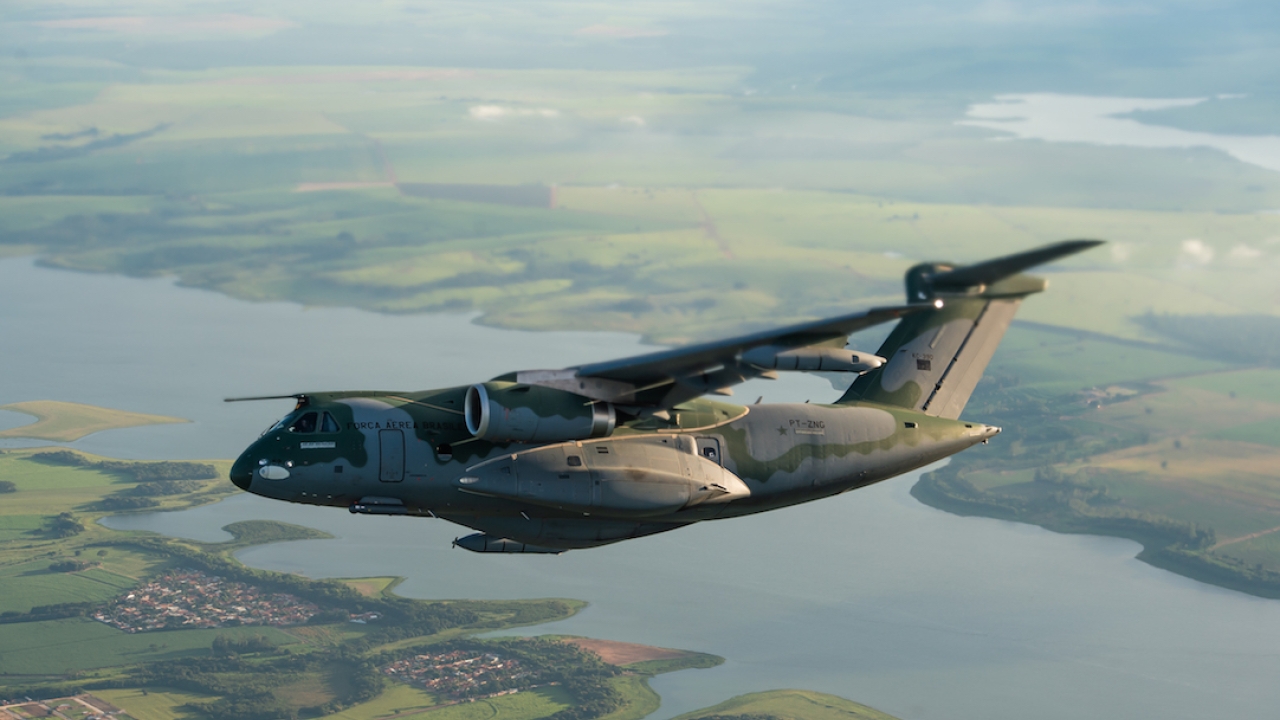Could Embraer’s C-390 be Saudi’s transporter of delight?
What chance does Embraer’s C-390 tactical transport have of replacing at least part of Saudi Arabia’s large, but ageing fleet of C-130 Hercules?

Flying high: Embraer’s C-390 is already in service with Brazil and has racked up contracts in Hungary, Netherlands and Portugal. Several South American nations are also known to be interested in the type. Picture: Embraer.
Brazilian manufacturer, Embraer, is known to be looking to the Middle East for orders for its C-390 tactical transport.
The aircraft has made several sales tours of the region in recent years, the latest a couple of months back in June.
Embraer is understandably coy about where it has shown off the aircraft, but its capabilities make it a contender to replace elderly transports, in particular the Lockheed Martin C-130 Hercules.
The company notes that the worldwide average age of tactical transports is a remarkable 31.2 years, so several nations will soon be looking to recapitalise their fleets.
“For strategic reasons, we cannot disclose some of the countries. However, as is public knowledge, the Kingdom of Saudi Arabia is one of the prospects in the region,” said an Embraer spokesman.
Saudi Arabia, with one of the largest transport fleets in the region, does, indeed, offer prospects for the Brazilian twin-jet transport.
The Royal Saudi Air Force (RSAF) has 33 C-130H/Js in its inventory, with 20 Js on order. It also has seven KC-130H tanker variants, plus two new-generation KC-130Js, with a further three KC-130Js to be delivered.
However, despite these existing orders, it is known that Saudi Arabia is still on the lookout for further multirole transport aircraft, with Lockheed Martin, Airbus, and Embraer having made offers to fill the requirement. The manufacturers’ identities suggest that the C-130J, A400M and C-390 respectively will be in the running for the order.
The RSAF fleet contains KC-130 tankers, a role that was originally one of the most heavily publicised for the Brazilian aircraft. It was initially designated KC-390, the ‘K’ being the international abbreviation (at least in the west) for refuelling capability. Embraer is now giving greater emphasis to transport roles, but the tanker designation is still very much part of the aircraft’s portfolio.
“It is important to highlight that, as the programme matures, the [C-390’s] operation with the Brazilian Air Force has proven its capability, reliability, and performance, with a mission completion rate of 97%,” the spokesman added.
As well as being chosen by its ‘home’ air arm, the C-390 has also picked up small orders from Portugal (five) and Hungary (two). In Portugal, the aircraft will replace the C-130H, while in Hungary, it will take the place of retired Antonov An-26s.
In June, the company picked up an order from Netherlands for five more C-390s – again, supplanting four elderly C-130Hs.
Embraer’s successes in winning orders from existing C-130 customers are good omens as, for many years, many nations took the view that the only replacement for an old Hercules was a new Hercules. Indeed, in the Netherlands, the C-390 was pitched against the C-130J.
The decision by a third NATO nation to adopt the type undoubtedly enhances the C-390’s credibility.
Embraer notes that the C-390’s cargo compartment’s length, width, and height are all slightly larger than those of the C-130J-30, the stretched version of the US aircraft. This gives the C-390 a maximum payload of 26 tonnes, compared to the C-130J-30’s 20 tonnes.
To boost its chances in the Middle East, Embraer earlier this year signed a memorandum of understanding (MoU) with BAE Systems to help market the aircraft in the region.
The UK company has had a strong presence in the Gulf for several years, notably in Saudi Arabia, where it helps maintain and support the RSAF’s fleets of Tornado strike aircraft and Eurofighter Typhoon fighters.
The agreement “sets the basis to establish a strategic partnership between BAE Systems and Embraer to collaborate in Middle Eastern markets for C-390, with an initial focus on the Kingdom of Saudi Arabia,” said the Embraer spokesman.
Stay up to date
Subscribe to the free Times Aerospace newsletter and receive the latest content every week. We'll never share your email address.


